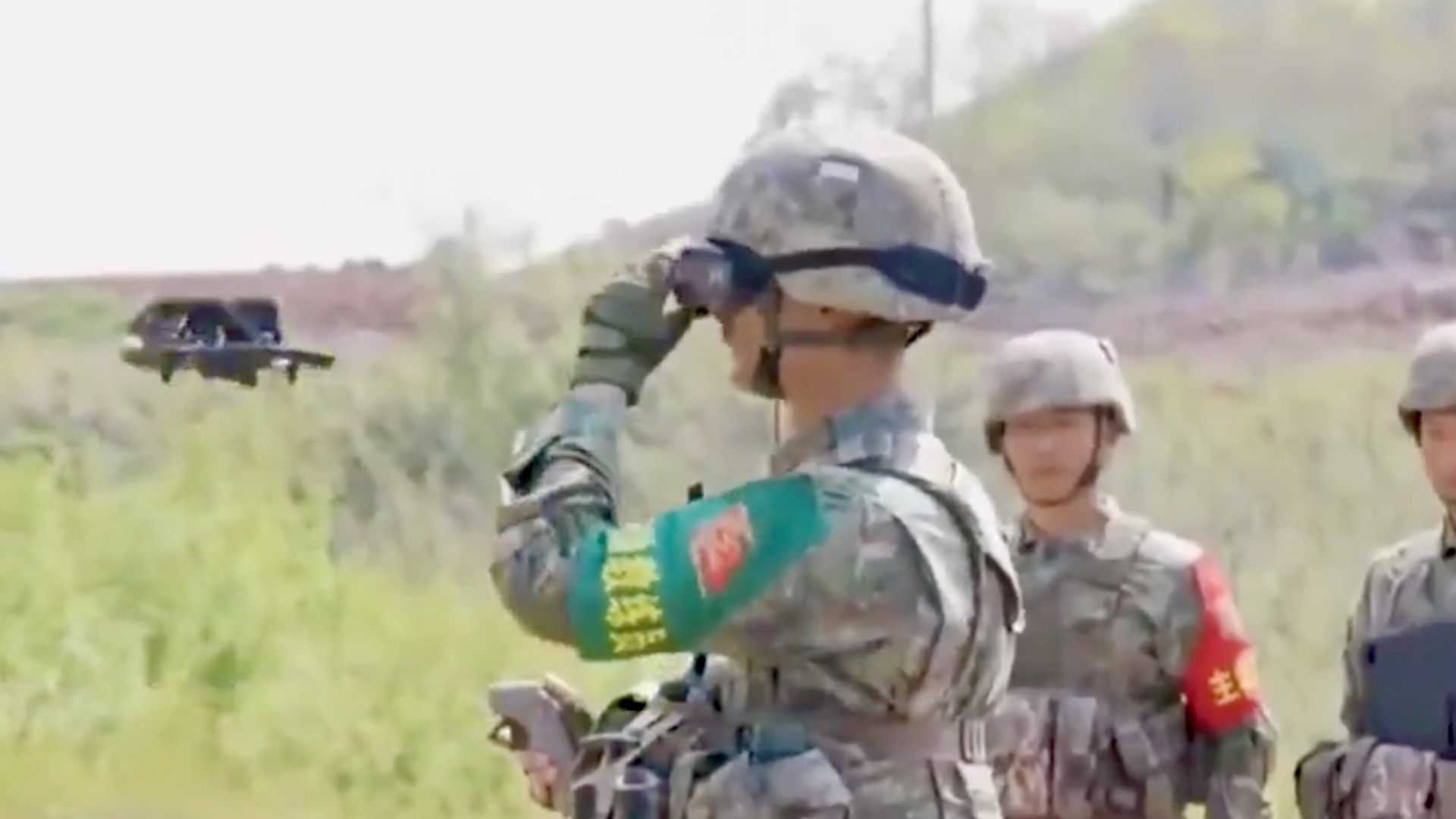China has posted video recently showing members of its People’s Liberation Army (PLA) training to defend against first-person view (FPV) drones. The footage underscores how critical the need to fend off these types of munitions has now become for military forces the world over. Weaponized FPV drone capability was rapidly incubated in the war in Ukraine, and the danger posed by it is driven home on a daily basis along the frontlines in that country. These drone capabilities are now showing up in other hotspots around the globe as the technology and techniques used to employ them proliferate. As a result, armed forces around the globe — including the U.S. military — are trying to adapt through training and even adopting FPV drones as weapons themselves.
The video, seen in the social media post below, was released by China’s state-run CCTV7 network, which is dedicated to news about the PLA. Exactly where or when it was shot, and when it was first aired, are unclear.
The vast majority of FPV drones — a type of loitering munition used primarily for precision attacks — are equipped with man-in-the-loop control, as seen in the video. Here, a continuous line-of-sight datalink between the drone and its operator who manually steers it is required. This can be impeded by a range of factors including distance between drone and operator, as well as terrain. However, the advantage of man-in-the loop control is that these types of drones are highly maneuverable; with operators able to switch targets on the fly. In many ways, FPV drones have ‘democratized’ short-range precision-guided munitions capabilities. You can read more about the implications of FPV drones here.
The footage begins with an operator sporting VR-like goggles hand-launching one of the drones. In all, five FPV drones are seen in the air as the exercise begins.
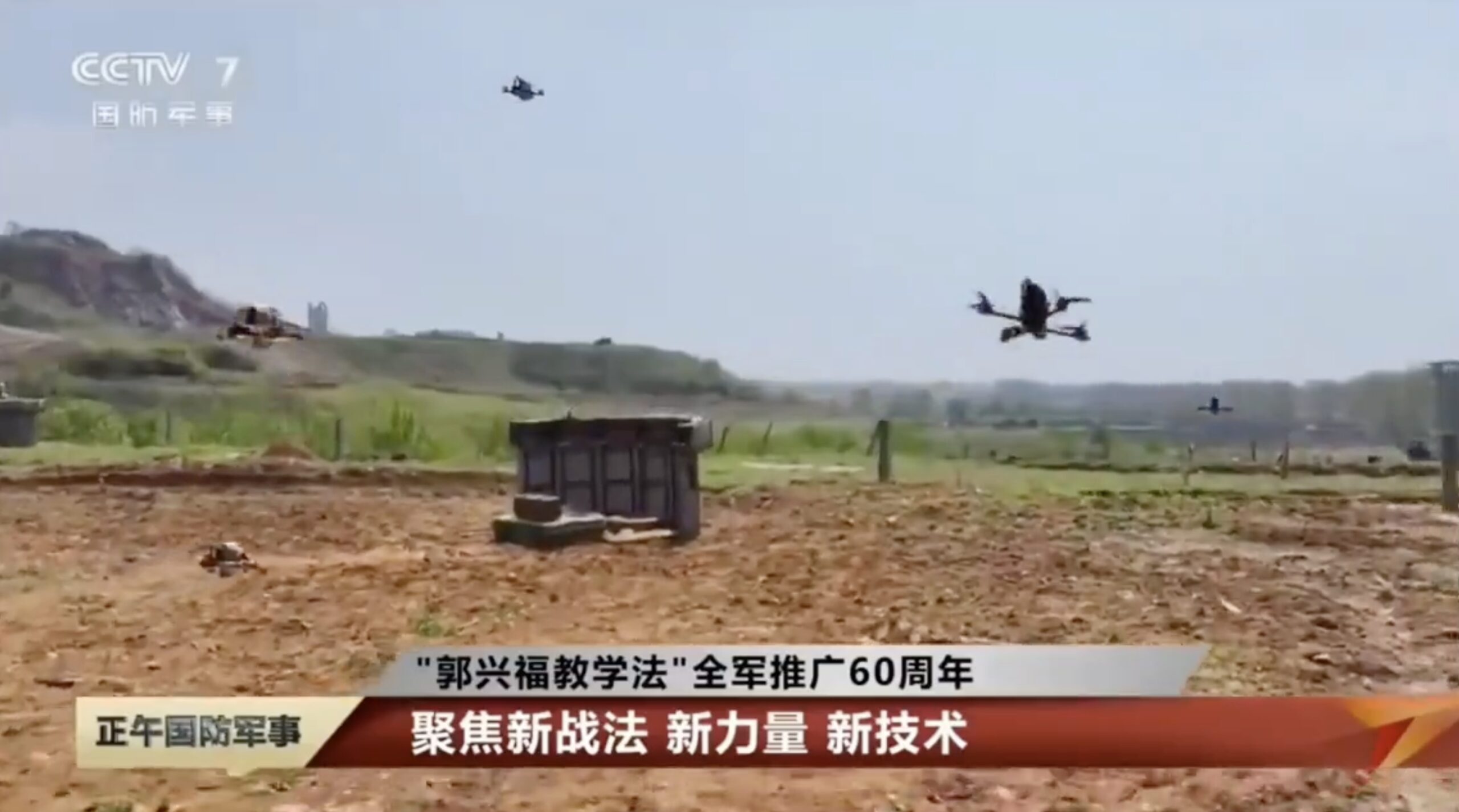
Personnel then quickly adopt defensive positions — taking cover behind concrete tank traps — as the munitions fly overhead.
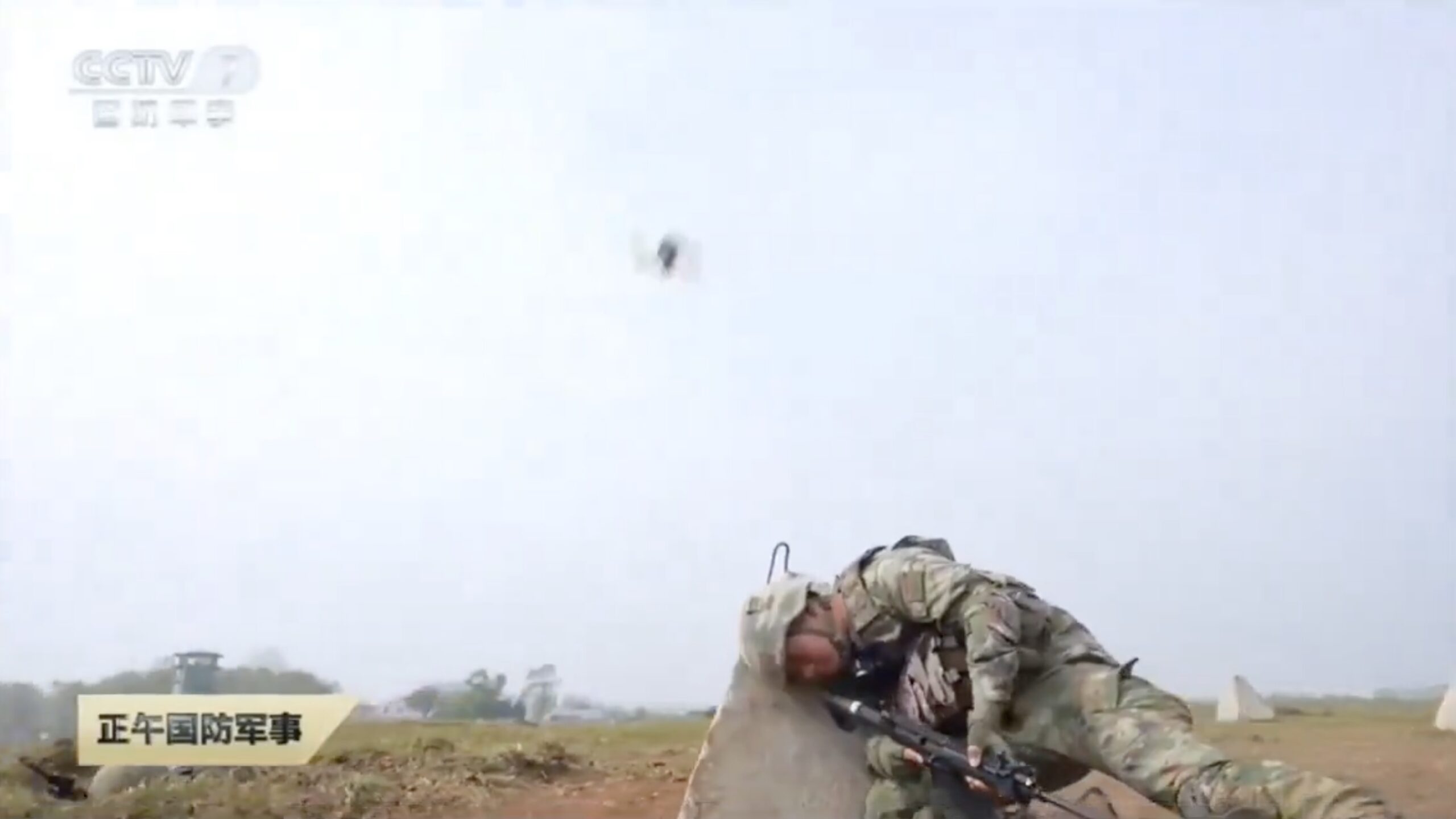
At around the 14-second mark in the footage, we see one individual rapidly taking shelter from a dummy explosive. This could represent one of the drones impacting, or perhaps a bomblet released from a quadcopter type.
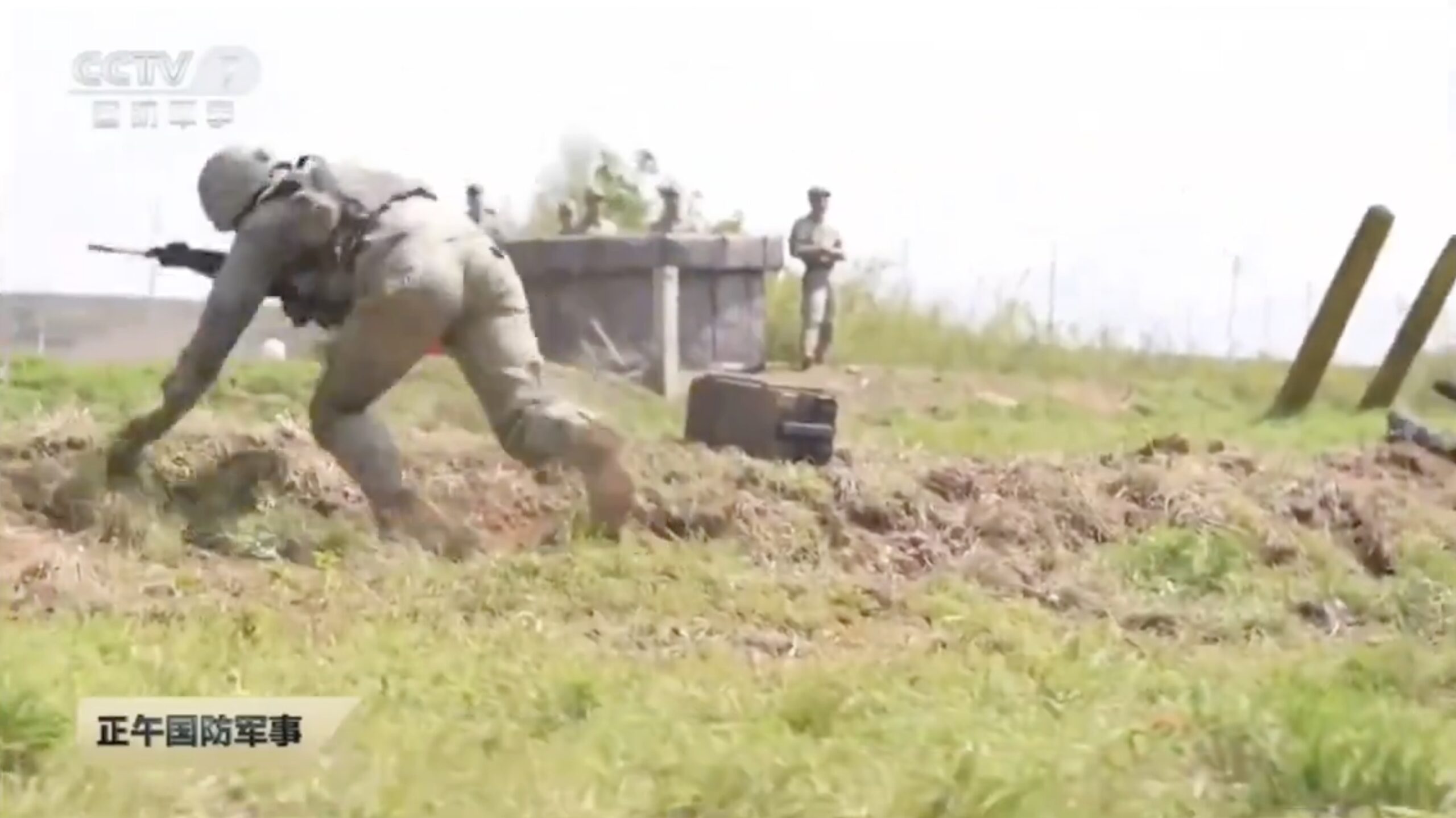
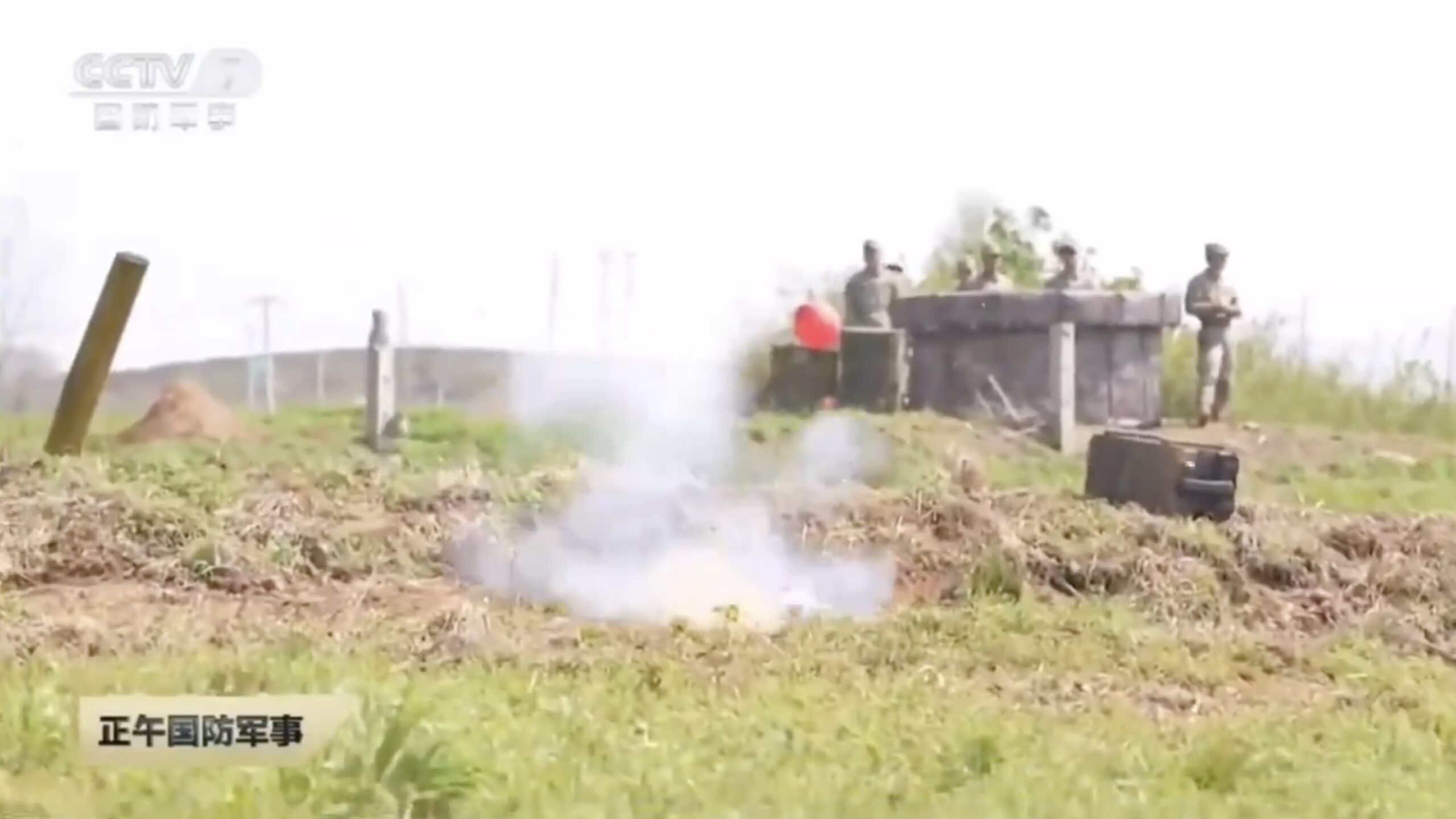
Alongside training on responding to incoming FPV drone strikes, we also see soldiers exploring methods to neutralize the drones. For example, the footage shows one individual launching a drone-catching net projectile at the 18-second mark to bring one to the ground.
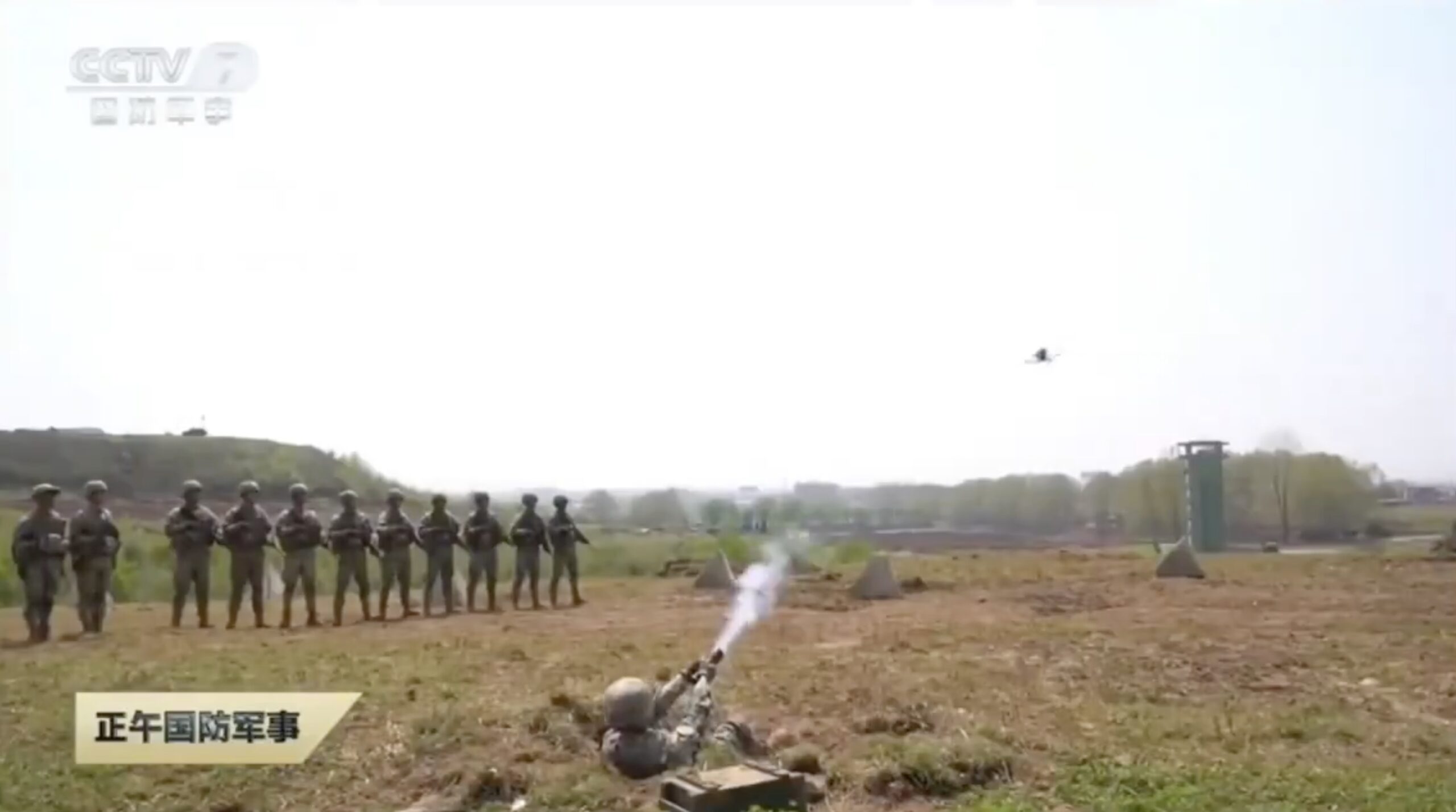
We also see another individual demonstrating an anti-drone jammer gun at the 16-second mark. I
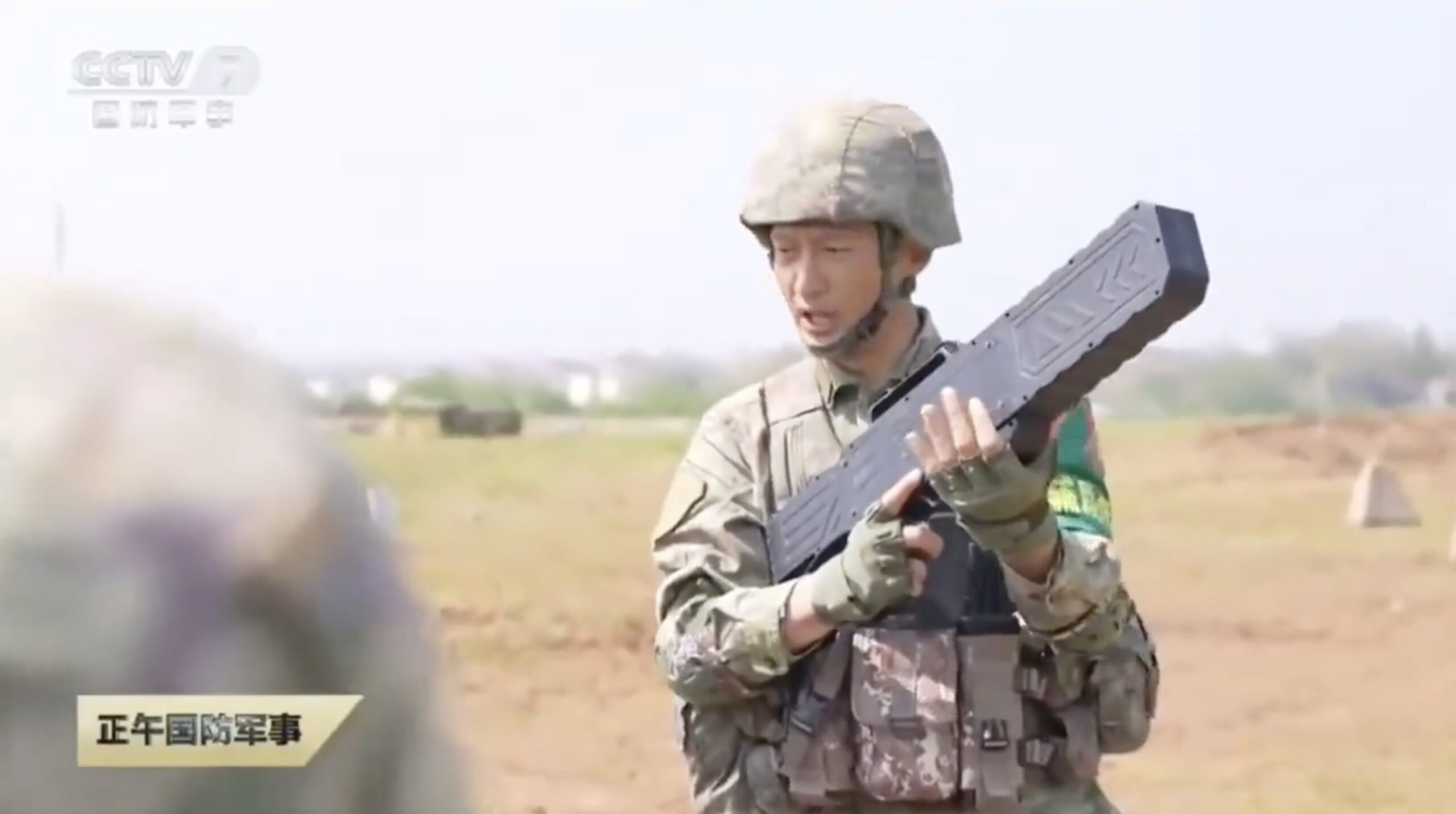
Of course, the threat posed by drones — inclusive of lower-tier weaponized commercial types — isn’t new, as The War Zone regularly indicates. Drone technology has rapidly increased in sophistication and accessibility in recent years, to the point where even relatively inexpensive ‘lower-end’ drones, both longer-range and short-range types, are on the verge of being able to autonomously pick their own targets en masse. You can read more about where this technology is headed in the near future here.
While China has been working on developing all types drone technologies across various capability tiers in recent years, including swarming capabilities, it has recently begun instructing soldiers and police on how to operate FPV drones themselves.
Footage of PLA soldiers performing FPV drone exercises, released by Chinese state media, has been circulating in recent weeks. In the video below, for example, we see PLA soldiers training with the munitions to engage targets, including armored vehicles and mock enemy defensive positions.
Moreover, the video below shows paramilitary People’s Armed Police (PAP) personnel performing more challenging aerobatic and kinetic targeting flights with FPV drones. This involved maneuvering them around an obstacle course, designed to simulate built-up environments in which they could potentially be used.
This all draws from tactics emanating from the war in Ukraine. The impact of FPV drones during the war cannot be overstated. They have become a signature weapon for both sides and have been used to great effect in hunting down tanks and soldiers on the battlefield, as well as other vehicles, even when inside buildings. Their use, which now rivals artillery in terms of effectiveness on the battlefield, has forced the desperate fielding of all types of countermeasures.
Such is the demand for these relatively cheap to produce, improvised types of guided weapons that Ukraine and Russia are competing to out-build each each other in this class of drone production. Ukrainian authorities have said in the past that they want to acquire around a million of them this year. At the same time, Russia has quickly boosted its own stockpiles of them, so much so that it is now directly competing with the numbers at Kyiv’s disposal.
The tactical utility of FPV drones in the context of Ukraine shows that they are only set to become more dangerous, and ubiquitous on and off traditional battlefields, as time goes on.
All of this is prompting armed forces around the world, including the U.S. military, to seek out various tiers of anti-drone defenses, as well as new tactics, techniques, and procedures to defend against drones. This includes the establishment of a drone defense training school in the U.S. Army. The Marines are even going a step further, with the intent of making pretty much everyone in their ranks a potential drone defender.

But it’s not just about defense anymore. The U.S. is also adopting these capabilities, albeit slowly, with purpose-built FPV types now moving into testing and U.S. special operations forces heading abroad to train on how to employ improvised types, like those being used in Ukraine. You can read all about this initiative here.
That the Chinese military, and others, including the U.S. armed forces, are training to defend against, but also operate, FPV drones is just the latest evidence of how fast lower-end drones are shaping modern warfare.
Contact the author: oliver@thewarzone.com
